Lipstick, the red temptation
-
Three quarters of women use lipstick, making it the most popular attribute in the make-up bag. On average, women buy one to two lipsticks a year and that's for good reason: Lipstick defines your image. Although all the colors of the rainbow have now been incorporated into lipsticks, red, full lips still make women confident and make men's hearts run wild. For example, lipstick is not only the finishing touch to clothing and hairstyle, but also a symbol of seduction ...
History of lipstick
-
Around five thousand years ago in ancient Mesopotamia the lips and other places on the face were already decorated. Semi-precious jewels were crushed and applied to the lips. It also occurred in Ancient Egypt. Cleopatra made her lipstick from crushed crimson beetles that gave a deep red pigment. Glow effects came much later, originally achieved by a substance from fish scales. During the Islamic Golden Age, Arab Andalusian cosmetics researcher Abu al-Qasim al-Zahrawi invented a solid lipstick. This was a perfumed rolled stick flattened into a special shape. Lipstick later found ground in the 16th century, in England. Queen Elizabeth I was the figurehead for bright red lips and a bright white face, an example to many. At the time, the lipstick was a mixture of beeswax and red-colored raw materials from plants and was sold in a piece of paper. But other raw materials were also used: henna, ocher, clay, red iron, grape, berry or cherry juice, ground red stone, seaweed, iron ore and carminic acid, extracted from a scale insect!
The first real lipstick
-
The first 'real' lipstick came in 1870. The name was 'Ne m'oubliez pas'. The tube contained a mixture of butter, wax and grapefruit pomade. In 1915 the American Maurice Levy invented the still well-known metal rotary holder. From the 1920s, the first lipsticks in iron and silver-plated containers were produced. Unfortunately, there were real toxins in lipstick at the time. These substances such as lead, mercury, vermilion and arsenic were banned in America in 1924. This so that the men who would kiss the women were in danger!
-
 11 minMain dishpeanut oil, tofu stir-fry cubes finely seasoned, stir fry sauce sweet and sour, thick noodles, carrot julienne, beetroot julienne, yellow bell pepper, watercress,rainbow salad with tofu
11 minMain dishpeanut oil, tofu stir-fry cubes finely seasoned, stir fry sauce sweet and sour, thick noodles, carrot julienne, beetroot julienne, yellow bell pepper, watercress,rainbow salad with tofu -
 45 minMain dishRed cabbage, mild olive oil, quinoa plus, forest outing, lemon, sesame oil, soy sauce less salt, Bio Today tahini white in pot, tap water,grilled red cabbage with quinoa salad
45 minMain dishRed cabbage, mild olive oil, quinoa plus, forest outing, lemon, sesame oil, soy sauce less salt, Bio Today tahini white in pot, tap water,grilled red cabbage with quinoa salad -
 30 minDessertBrie, Roquefort, port salut, gruyere, Camembert, walnut, garlic, thyme, honey, grape, baguette, Red onion, red grape, raisins, Red wine, Red wine vinegar, Brown sugar,generous cheese plate with onion marmalade
30 minDessertBrie, Roquefort, port salut, gruyere, Camembert, walnut, garlic, thyme, honey, grape, baguette, Red onion, red grape, raisins, Red wine, Red wine vinegar, Brown sugar,generous cheese plate with onion marmalade -
 30 minDessertFull Milk, whipped cream, macaroon, custard powder, vanilla sugar, sugar, protein, amaretto, almond liqueur, basic recipe cooking pears,macaroon pastry with casserole
30 minDessertFull Milk, whipped cream, macaroon, custard powder, vanilla sugar, sugar, protein, amaretto, almond liqueur, basic recipe cooking pears,macaroon pastry with casserole
Lipstick more and more popular
-
During the Second World War, lipstick gained more and more popularity. This is due to its use in the film industry. It became 'normal' for women to stick their lips. Max Factor, a well-known cosmetics brand, was one of the first to design a product for the film industry that mimics blood. It was very similar to lipstick except that it didn't contain beeswax. For that reason it had a viscosity approaching human blood. By the way, from this time lipsticks got real names. Revlon invented Fatal Apple, and with that the market broke loose. Usually names are chosen that refer to flowers, fruits, women's names or colors themselves. Although traditionally only women use lipstick, lipstick for men in the theater is very common. It is then called 'manstick'. In the nineties, the first long lasting lipsticks, invented by the Lip-Ink International company, came onto the market. Other companies imitated the idea and came up with their own versions, all based on the lack of wax.
Why lipstick?
-
Lipstick is a cosmetic product in the form of a stick that contains coloring agents, oils, waxes and additional ingredients that add color and contour to the lips. The basis of every lipstick is always the same.
Types of lipstick
-
Matte lipstick Matte lipsticks do not shine. The disadvantage is that they can dry out easily, as the main ingredient is clay powder and no fat. If you want a lipstick that lasts for a long time, a matte kind is the answer. Matte lipstick looks chic and classic, but can also make lips appear smaller.
-
 5 minDrink without alcoholbananas, cool fresh apple-pear raspberry juice, Soy drink vanilla,soy fruit shake
5 minDrink without alcoholbananas, cool fresh apple-pear raspberry juice, Soy drink vanilla,soy fruit shake -
 20 minMain dishsauerkraut, sticking potato, liquid baking product, half-to-half minced, Spice meatballs, pineapple, olive oil, liquid baking product,gratin sauerkraut dish with minced meat
20 minMain dishsauerkraut, sticking potato, liquid baking product, half-to-half minced, Spice meatballs, pineapple, olive oil, liquid baking product,gratin sauerkraut dish with minced meat -
 40 minMain dishlemongrass, fresh ginger, Red peppers, onions, tomato cubes, fresh cod fillet, coriander, oil, ground turmeric (koenjit), coconut milk, salt,fish in creamy coconut sauce
40 minMain dishlemongrass, fresh ginger, Red peppers, onions, tomato cubes, fresh cod fillet, coriander, oil, ground turmeric (koenjit), coconut milk, salt,fish in creamy coconut sauce -
 15 minSide dishsweet potato, soft goat cheese, egg, spring / forest onion,stuffed sweet potato with egg
15 minSide dishsweet potato, soft goat cheese, egg, spring / forest onion,stuffed sweet potato with egg
Cream lipstick
-
Cream lipsticks are the most popular. It offers a good balance of shine and durability. The shine is subtle.
Hydrating Lipstick
-
Hydrating lipsticks contain oil-like ingredients including shea butter. This type of lipstick prevents the lips from drying out. The disadvantage is that they fade easily.
Lipgloss
-
Lip gloss is not that colorful and feels moist. Above all, it provides a striking festive shine but fades away quickly. Lip gloss can be applied over lipstick to soften too bright or dark color and for some it is just the finishing touch. Also suitable for narrow lips for a fuller effect, or if you are staying in an environment with a lot of bright light.
-
 20 minMain dishTasty vine tomato, (olive oil, fresh basil, onion, garlic, Parmigiano Reggiano, zucchini spaghetti, pumpkin spaghetti, mini buffalo mozzarella,lukewarm pumpkin and zucchini spaghetti
20 minMain dishTasty vine tomato, (olive oil, fresh basil, onion, garlic, Parmigiano Reggiano, zucchini spaghetti, pumpkin spaghetti, mini buffalo mozzarella,lukewarm pumpkin and zucchini spaghetti -
 15 minSide dishtraditional olive oil, curry powder, wheat flour, coconut milk, sambal oelek, chicken broth tablet, water, fresh mango,curry sauce with mango
15 minSide dishtraditional olive oil, curry powder, wheat flour, coconut milk, sambal oelek, chicken broth tablet, water, fresh mango,curry sauce with mango -
 30 minMain dishtraditional olive oil, lean ground beef, frozen Mexican wok vegetables, salsa sauce mild, taco shell, grated young cheese, creme fraiche,Mexican vegetable in tacos
30 minMain dishtraditional olive oil, lean ground beef, frozen Mexican wok vegetables, salsa sauce mild, taco shell, grated young cheese, creme fraiche,Mexican vegetable in tacos -
 95 minMain dishmaize chicken, lemon, coarse sea salt, pepper, extra virgin olive oil, garlic, thyme, zucchini, tomatoes (small to), black olives without pit,provençal chicken with zucchini and tomatoes
95 minMain dishmaize chicken, lemon, coarse sea salt, pepper, extra virgin olive oil, garlic, thyme, zucchini, tomatoes (small to), black olives without pit,provençal chicken with zucchini and tomatoes
Mother-of-pearl lipstick
-
Pearlescent lipsticks contain particles of mica or silica to give the special pearlescent shine. It has a sensual look.
Metallic lipstick
-
Metallic lipstick picks up where pearlescent lipstick ends: Dramatic effects with this type of lipstick.
Long Lasting Lipstick
-
Long lasting lipstick contains silicone oil that holds the color on the lips longer.
-
 25 minSmall dishflour, frozen puff pastry, egg, milk, walnut, mature cheese, paprika, dried Provençal herbs,puff pastry-sticks
25 minSmall dishflour, frozen puff pastry, egg, milk, walnut, mature cheese, paprika, dried Provençal herbs,puff pastry-sticks -
 20 minSide dishEggs, lettuce, parsley, olive oil (extra virgin), tarragon vinegar, salt and freshly ground pepper,lettuce with egg dressing
20 minSide dishEggs, lettuce, parsley, olive oil (extra virgin), tarragon vinegar, salt and freshly ground pepper,lettuce with egg dressing -
 15 minSmall dishbaking flour, peanut oil, flat leaf parsley,ar'nabit mi'li
15 minSmall dishbaking flour, peanut oil, flat leaf parsley,ar'nabit mi'li -
 15 minAppetizerScottish salmon fillet, butter or margarine, fresh dill, creme fraiche, dry white wine, arugula lettuce melange, pan tostado,baked salmon with white-wine sauce
15 minAppetizerScottish salmon fillet, butter or margarine, fresh dill, creme fraiche, dry white wine, arugula lettuce melange, pan tostado,baked salmon with white-wine sauce
Lip Balm
-
Lip balms are lipsticks without color that are used to condition and soften the lips. Men also make use of this.
What color lipstick?
-
Lipstick almost always has red pigment in it, whether it is a light pink shade, or tending more towards brown. Choosing the right lipstick color is all about the color of your face and hair, where the principle of the seasons and the corresponding color schemes play a role. For example, a winter type (dark hair, white skin) will need a different shade of lipstick than a spring type (blonde hair, light pink skin). Many women find the principle of the seasons somewhat complicated. Below another, simpler subdivision:
Pale skin and dark hair
-
Raspberry, fuchsia, pink, burgundy, berries, bright red, plum red, wine red.
-
 25 minMain dishbalsamic vinegar, garlic, steak, Spaghetti, traditional olive oil, fresh green olive tapenade, arugula, Parmigiano Reggiano,spaghetti with steak and arugula
25 minMain dishbalsamic vinegar, garlic, steak, Spaghetti, traditional olive oil, fresh green olive tapenade, arugula, Parmigiano Reggiano,spaghetti with steak and arugula -
 15 minAppetizerfennel bulb, arugula, red pointed pepper, black agnus carpaccio (a 100 grams), capers,black angus carpaccio with fennel
15 minAppetizerfennel bulb, arugula, red pointed pepper, black agnus carpaccio (a 100 grams), capers,black angus carpaccio with fennel -
 35 minMain dishsweet potatoes, salad onion, garlic, cooking dairy, grated cheese for vegetable gratin, almond shavings, peanut oil, breaded schnitzels, Broccoli,crispy schnitzel with sweet potato gratin and broccoli
35 minMain dishsweet potatoes, salad onion, garlic, cooking dairy, grated cheese for vegetable gratin, almond shavings, peanut oil, breaded schnitzels, Broccoli,crispy schnitzel with sweet potato gratin and broccoli -
 30 minMain disholive oil, onion, tomato, risotto rice, laurel leaf, thyme, saffron, turmeric, fish stock of 1 tablet, mixed seafood, mixed whitefish fillet, mussel, lemon,fish paella from the oven
30 minMain disholive oil, onion, tomato, risotto rice, laurel leaf, thyme, saffron, turmeric, fish stock of 1 tablet, mixed seafood, mixed whitefish fillet, mussel, lemon,fish paella from the oven
Pale skin and light hair
-
Soft pink, salmon, coral, beige.
Pale skin and red hair
-
Bronze, copper, orange, reddish brown.
Neutral to light brown skin, brown / dark hair
-
Warm red, deep red, dark pink, mauve, pink beige, deep pink, coffee, caramel, medium brown.
-
 15 minMain dishgreen tagliatelle, garlic, Red pepper, olive oil, tomato cubes, cocktail shrimp, mixed salad, vinaigrette,spicy tagliatelle with shrimps
15 minMain dishgreen tagliatelle, garlic, Red pepper, olive oil, tomato cubes, cocktail shrimp, mixed salad, vinaigrette,spicy tagliatelle with shrimps -
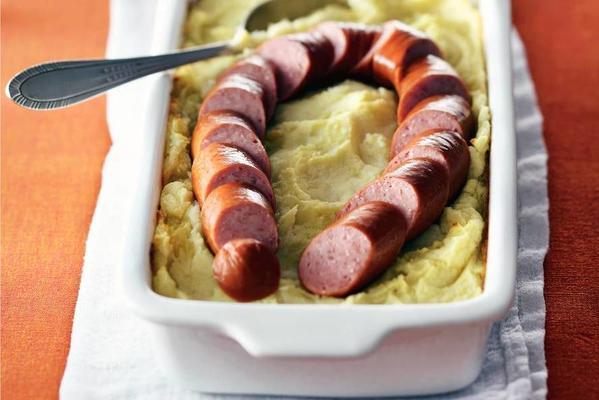 50 minMain dishsomething crumbly potatoes, sauerkraut natural, tomato paste, sambal oelek, bacon, semi-skimmed milk, unsalted butter, Gelderse smoked sausage,Sauerkraut with smoked sausage
50 minMain dishsomething crumbly potatoes, sauerkraut natural, tomato paste, sambal oelek, bacon, semi-skimmed milk, unsalted butter, Gelderse smoked sausage,Sauerkraut with smoked sausage -
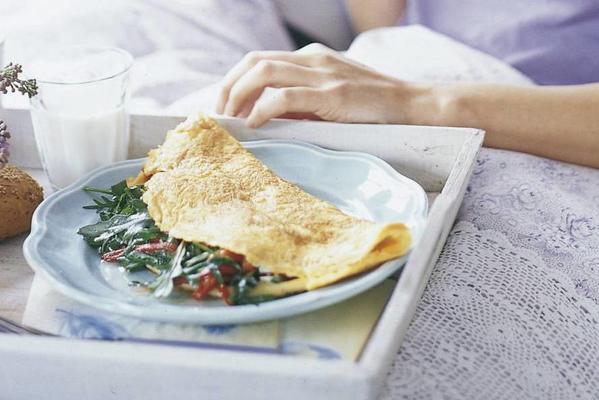 20 minBreakfastrucola lettuce, bunch onion, roasted red peppers in pot, traditional olive oil, medium sized egg, fresh cream, grated mature cheese, butter,creamy cheese omelet with arugula
20 minBreakfastrucola lettuce, bunch onion, roasted red peppers in pot, traditional olive oil, medium sized egg, fresh cream, grated mature cheese, butter,creamy cheese omelet with arugula -
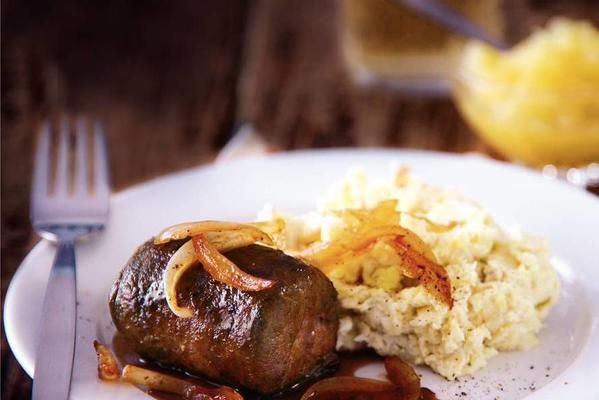 25 minMain dishceleriac, floury potatoes, olive oil, beef finches, onion, Apple juice, gravy natural, dairy spread,beeffinch with sweet apple gravy
25 minMain dishceleriac, floury potatoes, olive oil, beef finches, onion, Apple juice, gravy natural, dairy spread,beeffinch with sweet apple gravy
Dark skin and black hair
-
Red with blue undertone, warm red, deep red, mauve, aubergine, wine red, mahogany, chocolate brown, pink beige.
Neutral skin and gray hair
-
Pink, warm red.
Lipstick tips
-
If the lips are too full, choose a matte lipstick which makes them look narrower. If your lips are too narrow, don't choose a dark shade of lipstick because it will make them look even narrower, but choose a glossy type. Decide whether you want to emphasize your eyes or your mouth. Both pose a risk of an unnatural effect. With heavily made-up eyes, keep the lip color neutral, and with a bright color lipstick only make up the eyes slightly. There are lipsticks with a UV filter for the beach. With a dark color lipstick or a dry lipstick, application is more difficult because this must be done very carefully. Light shades of lipsticks are easier to “mess up”.
-
 25 minMain dishthin bacon strips, onion, chicken fillet, smoked paprika, chestnut mushrooms, traditional olive oil, chilled little newborns, fresh carrots and snow peas,free-range chopsticks with mixed vegetables
25 minMain dishthin bacon strips, onion, chicken fillet, smoked paprika, chestnut mushrooms, traditional olive oil, chilled little newborns, fresh carrots and snow peas,free-range chopsticks with mixed vegetables -
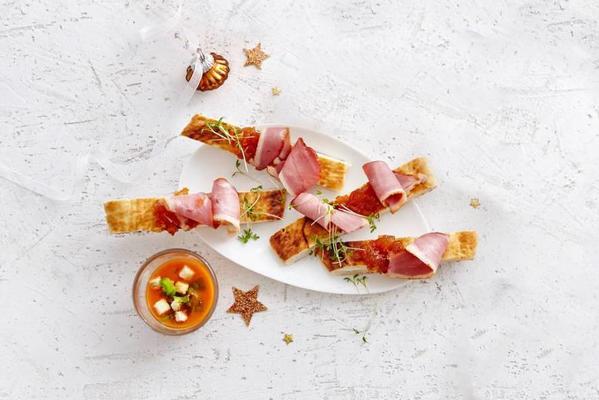 15 minSnackflatbread, Mango Chutney, smoked duck breast, cress,oriental duck
15 minSnackflatbread, Mango Chutney, smoked duck breast, cress,oriental duck -
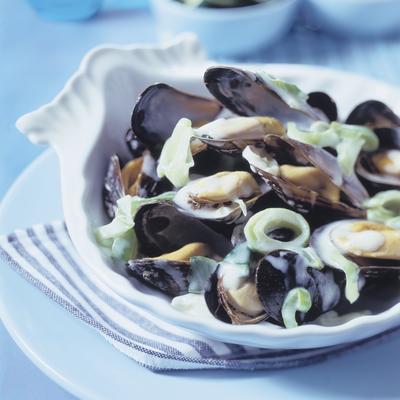 20 minMain dishmussel, butter, leeks, White wine, water, creme fraiche,normandy mussels in cream sauce
20 minMain dishmussel, butter, leeks, White wine, water, creme fraiche,normandy mussels in cream sauce -
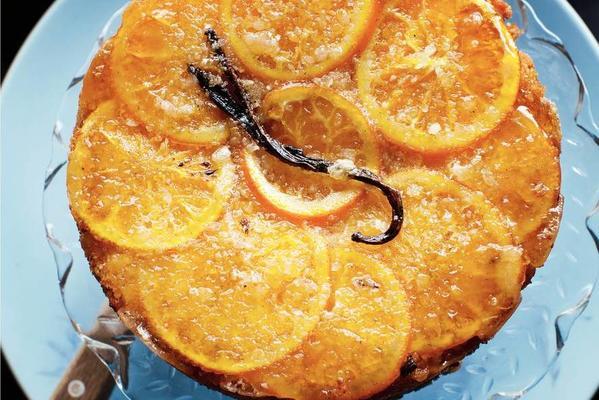 65 minDessertsugar, vanilla bean, oranges, almond shavings, butter, Eggs, vanilla sugar, self-raising flour,orange-almond pie
65 minDessertsugar, vanilla bean, oranges, almond shavings, butter, Eggs, vanilla sugar, self-raising flour,orange-almond pie
Apply lipstick
-
The best result is achieved by first powdering the lips with a foundation. This is to prevent smearing and smearing of the lipstick, as well as making it easier to correct lipstick once applied. Then draw in the lip edges with a lip pencil. A lip pencil should be as close to the color of your lips as possible. If the lips are too narrow, take it a bit wider and create a new edge, as it were. Note: Maximum 1 millimeter from the natural line! With lips that are too full you stay within the edges. Apply the lipstick directly or with a brush. The latter gives a more precise result (you can get into the corners of the mouth more easily) and more color pigment on the lips. Then scrape off the excess lipstick with a tissue. If the lipstick is applied directly, without a brush, then apply a thin layer of lipstick for a longer shelf life and a better effect.
Remove lipstick
-
Lipstick will disappear on its own but if you want to get rid of the lipstick sooner, apply some cleansing milk to a moistened cotton pad, tissue or paper handkerchief. Sweep from the corners to the center of the lips, then pat lightly and let dry. Finally, apply a moisturizing lip balm if necessary.
Cruelty-free lipstick
-
Animal testing for cosmetics is the height of madness. Fortunately, since 1997 it has been prohibited in the Netherlands to carry out animal testing for cosmetics, including lipstick. Yet the Dutch shelves are full of products that have been tested on animals. This is because the cosmetics are imported from abroad, where animal testing is (still) allowed. There has been progress: In 2013, there will be a complete European ban on testing and trade for cosmetics that are tested on animals. But until then, one does not have to make do with lipsticks for which animals have suffered completely unnecessarily. Lipsticks from the following manufacturers are not tested on animals and are therefore safe: The Body Shop, (HEMA) -Miss Helen, Kruidvat Eigen Merk, Etos Eigen Merk, DA private label and Trekpleister private label. The Proefdiervrij Association has the full list on the website.